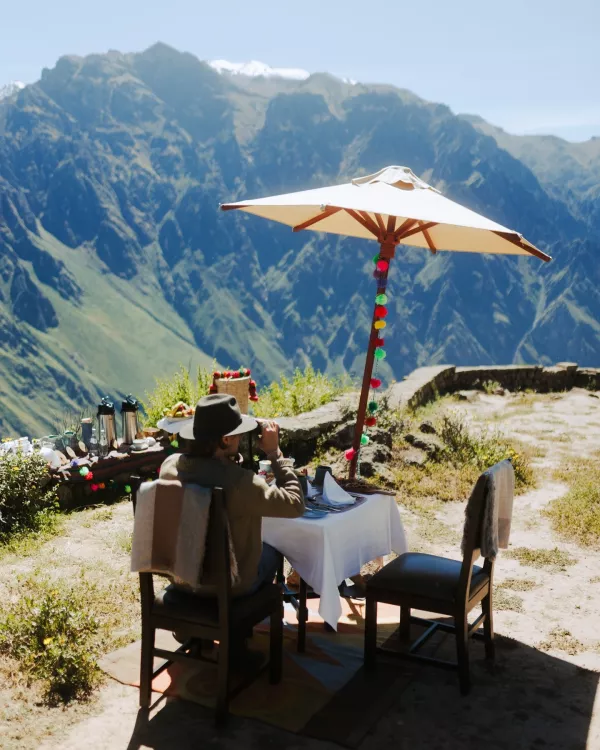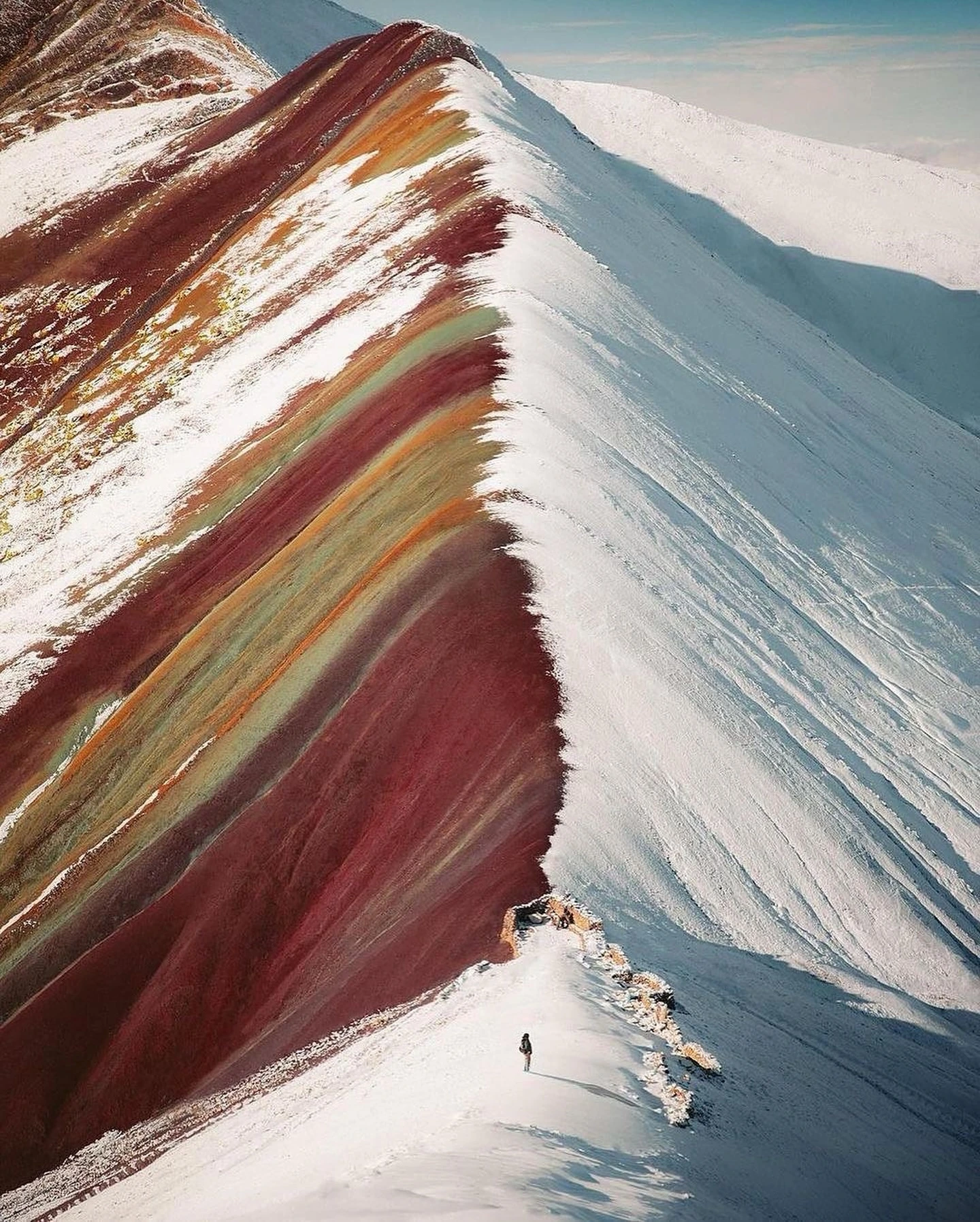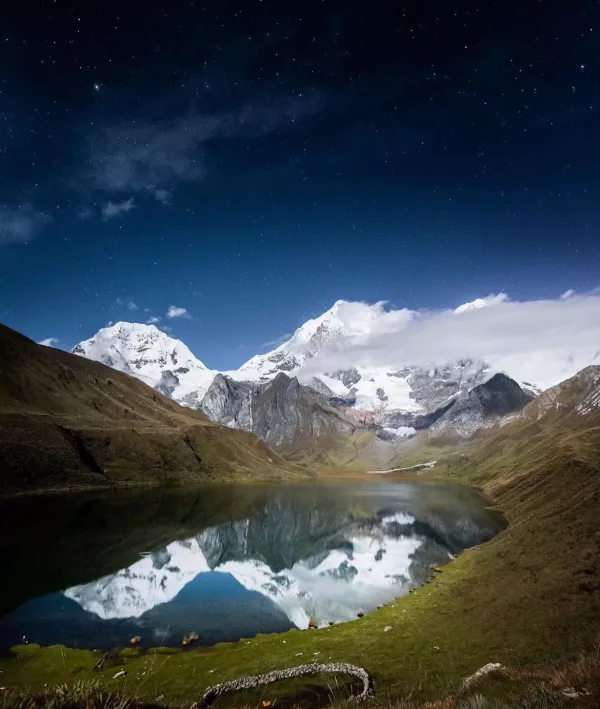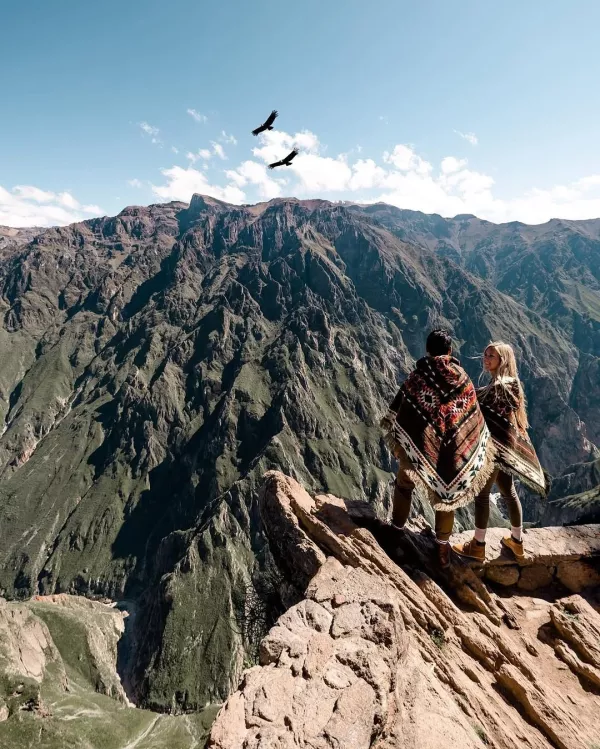Peru is one of the most breathtaking destinations in South America, offering a diverse range of landscapes, rich history, and vibrant culture. Whether you are looking to explore the iconic Machu Picchu, venture into the Amazon Rainforest, or experience the local traditions in bustling cities, choosing the right time to visit is essential for an unforgettable trip. In this guide, we will explore the best time to travel to Peru in 2025, focusing on peak season, weather conditions, festivals, and must-do activities.
Peak Season in Peru (May to September)
The peak travel season in Peru runs from May to September, coinciding with the dry season in the Andean and Amazon regions. This period is considered the best time for outdoor activities, making it a favorite among travelers worldwide.
Weather Conditions
During the peak season, the weather is generally dry and sunny, especially in popular destinations such as Cusco, the Sacred Valley, and Arequipa. Daytime temperatures range from 15°C to 25°C (59°F to 77°F), while nighttime temperatures can drop significantly, particularly in high-altitude areas like Cusco and Puno. The Amazon region experiences lower humidity and fewer rain showers, making jungle expeditions more comfortable.
Crowds and Costs
Since this is the most popular time to visit Peru, expect larger crowds at major tourist sites, especially Machu Picchu. Tickets for popular attractions, including the Inca Trail, tend to sell out quickly, so advance booking is highly recommended. Accommodation and tour prices are also at their highest during these months.
Advantages of Visiting During Peak Season
- Ideal Weather: The dry conditions make trekking, sightseeing, and photography much easier and more enjoyable.
- Clear Skies: The reduced chance of rainfall means breathtaking views of Machu Picchu, Rainbow Mountain, and the Andean landscapes.
- Best Trekking Conditions: If you plan on hiking the Inca Trail, Salkantay Trek, or other famous routes, the peak season offers the best conditions for these adventures.
- Wildlife Viewing: The Amazon Rainforest has lower water levels, making it easier to spot wildlife such as jaguars, pink river dolphins, and macaws.
Festival Highlights and Cultural Events
Peru is renowned for its lively festivals and cultural events, many of which take place during the peak travel season. These celebrations offer visitors a unique opportunity to immerse themselves in the country's traditions, music, and dance.
Inti Raymi (June 24)
One of the most important cultural events in Peru, Inti Raymi, or the Festival of the Sun, is celebrated in Cusco every June. This ancient Incan festival honors the Sun God, Inti, and includes elaborate reenactments, colorful parades, and traditional music. Thousands of locals and tourists gather at the Sacsayhuamán archaeological site to witness the grand ceremonies.
Virgen del Carmen Festival (July 16)
Held in the town of Paucartambo, near Cusco, this festival is a vibrant celebration featuring masked dancers, folk music, and religious processions. It is an excellent way to experience authentic Peruvian culture and traditions.
Fiestas Patrias (July 28-29)
Peru's Independence Day celebrations take place at the end of July, with nationwide festivities including parades, fireworks, and traditional food fairs. Lima, Cusco, and Arequipa host some of the most spectacular events during this time.
Popular Activities and Attractions
Visiting Peru during the peak season provides countless opportunities for adventure, history, and cultural exploration. Here are some of the top activities and attractions to consider:
Exploring Machu Picchu
Machu Picchu is the crown jewel of Peru and a must-visit site for any traveler. The best time to explore this ancient Incan citadel is during the dry season, as clear skies offer stunning panoramic views. Consider taking the Inca Trail, which requires booking several months in advance, or opt for the more flexible train route from Cusco.
Hiking the Inca Trail and Other Treks
If you love trekking, Peru offers some of the most spectacular trails in the world. The Inca Trail, Salkantay Trek, and Lares Trek are popular options for those looking to experience breathtaking landscapes and ancient ruins along the way.
Visiting Lake Titicaca
Located at the border of Peru and Bolivia, Lake Titicaca is the highest navigable lake in the world. The floating Uros Islands and the traditional communities of Taquile and Amantaní provide an authentic cultural experience.
Exploring the Amazon Rainforest
Peru's Amazon region is home to incredible biodiversity. The dry season is an excellent time for jungle excursions, as lower water levels attract a wide variety of wildlife. Visit Iquitos or Puerto Maldonado for an unforgettable Amazonian adventure.
Discovering the Nazca Lines
The Nazca Lines, a series of massive geoglyphs etched into the desert, remain one of the world's greatest archaeological mysteries. Taking a flight over these ancient designs is an awe-inspiring experience.
Experiencing Lima's Gastronomy Scene
Lima, the capital of Peru, is a world-renowned food destination. Visitors can indulge in traditional Peruvian dishes like ceviche, lomo saltado, and causa, as well as fine dining experiences at award-winning restaurants such as Central and Maido
Off-Peak Season: October to April
For those looking to experience Machu Picchu with fewer crowds, the off-peak season from October to April is an excellent choice. This period marks the rainy season in Peru, bringing lush, vibrant landscapes and a more tranquil atmosphere. While occasional showers are common, travelers benefit from lower prices on accommodations and tours. Luxury tour operators like ILE Tours provide exclusive experiences that ensure comfort and adventure even during the wet season.
Morning vs. Afternoon Visits
Choosing between a morning or afternoon visit to Machu Picchu depends on personal preferences. Mornings offer cooler temperatures, mist-covered ruins, and an ethereal ambiance before the larger crowds arrive. The soft morning light also enhances photography opportunities, creating breathtaking images of the citadel. On the other hand, an afternoon visit presents fewer tourists, a more relaxed exploration pace, and the chance to witness a mesmerizing sunset over the ancient ruins.
ILE Tours recommends an early morning visit for those seeking the most magical experience. Alternatively, an afternoon tour provides a more private and unhurried atmosphere while still offering the luxury and exclusivity that discerning travelers desire.
Seasonal Considerations for the Inca Trail
The Inca Trail is one of the most iconic trekking routes in the world, with conditions varying throughout the year. The dry season from May to September provides ideal hiking conditions, featuring clear skies and stable terrain. However, this also means higher foot traffic and limited availability, necessitating early reservations. The off-peak season, spanning from October to April, offers a more intimate and immersive experience, though trekkers should prepare for wet and muddy paths.
ILE Tours ensures a seamless and luxurious trekking adventure, providing expert guides, premium camping accommodations, and tailored itineraries designed to maximize both comfort and excitement.
Crowd Levels Throughout the Year
Machu Picchu experiences seasonal fluctuations in visitor numbers. The peak season from June to August aligns with the dry season and summer vacations in the Northern Hemisphere, drawing large crowds and requiring early bookings for tickets, trains, and accommodations.
In contrast, the months from October to April witness a decline in visitor numbers, making it an ideal time for those seeking exclusivity and personalized experiences. ILE Tours specializes in crafting high-end travel experiences, offering VIP access, private guided tours, and luxurious accommodations that elevate the journey regardless of the season.
Exploring the Sacred Valley: Optimal Timing
The Sacred Valley of the Incas is a must-visit destination either before or after exploring Machu Picchu. The best time to visit depends on individual preferences. The dry season provides ideal conditions for outdoor adventures such as trekking, horseback riding, and hot air ballooning over the valley. Meanwhile, the rainy season transforms the landscape into a lush, green paradise, offering a more serene and authentic experience with fewer crowds.
With ILE Tours, visitors gain exclusive access to private haciendas, curated cultural experiences with local artisans, and guided explorations of hidden gems within the valley. Whether traveling during peak or off-peak seasons, luxury travelers can expect a seamless, immersive journey blending history, nature, and unparalleled comfort.
By choosing the right timing and partnering with an experienced luxury tour operator like ILE Tours, travelers can maximize their enjoyment of Machu Picchu and the surrounding regions while indulging in world-class service and exclusivity.
When to Go
Embarking on an Amazon Rainforest adventure is a dream for many travelers, and choosing the right time to visit is crucial for an unforgettable experience. Factors such as wildlife viewing opportunities, river levels, accessibility, coastal experiences, and budget considerations play significant roles in planning your journey. This guide delves into these aspects to help you make an informed decision for your luxury expedition with ILE Tours.
Wildlife Viewing Opportunities
The Amazon Rainforest boasts unparalleled biodiversity, offering visitors the chance to observe a myriad of species in their natural habitats. However, wildlife visibility varies throughout the year due to climatic changes and animal behaviors.
Dry Season (June to November): During these months, lower water levels concentrate wildlife along riverbanks and remaining water sources, making it easier to spot animals such as jaguars, capybaras, and various bird species. Trails are more accessible, and mosquitoes are less prevalent, enhancing the overall experience.
Wet Season (December to May): The rainforest transforms with rising water levels, allowing for canoe excursions into flooded forests. This period is ideal for observing aquatic life, including pink river dolphins, and accessing areas that are otherwise unreachable. Birdwatchers may find this season particularly rewarding due to increased nesting activities.
River Levels and Accessibility
River conditions in the Amazon significantly influence transportation and accessibility.
High Water Season (December to May): Elevated river levels facilitate navigation by boat, granting access to deeper parts of the rainforest and secluded tributaries. However, some trails may be submerged, limiting land-based activities.
Low Water Season (June to November): Reduced water levels expose more trails and beaches, providing opportunities for hiking and camping. Certain waterways may become too shallow for navigation, potentially restricting access to specific areas.
Coastal Experiences and Lima Visits
Incorporating Peru's coastal attractions and a visit to Lima can enrich your Amazon adventure.
Lima: As Peru's capital, Lima offers a blend of historical sites, vibrant culture, and renowned gastronomy. The city experiences mild temperatures year-round, with a cooler, misty period from June to September due to the "garúa" (a coastal mist).
Coastal Activities: Peru's coastline features beautiful beaches and marine life. The summer months (December to March) are ideal for beach activities, with warmer temperatures and clearer skies.
Budget Considerations and Seasonal Pricing
Travel costs in the Amazon region fluctuate based on the season.
Peak Season (June to August): Coinciding with the dry season and international vacation periods, this time sees higher demand, leading to increased prices for accommodations and tours. Early booking is advisable.
Shoulder Seasons (April to May and September to November): These transitional periods offer favorable weather conditions with fewer crowds. Travelers may find more availability and potentially lower rates.
Off-Peak Season (December to March): The wet season brings fewer tourists and the possibility of discounted rates. While some activities may be limited due to rainfall, this period provides a more secluded experience.
High Season vs. Low Season Costs
When planning a luxury Amazon adventure with ILE Tours, understanding the cost differences between high and low seasons can help maximize your experience while managing expenses.
- High Season (June to August & December to January): Demand for Amazon tours peaks during these months due to favorable weather conditions and international vacation schedules. Prices for luxury lodges, guided excursions, and flights tend to rise, and availability may be limited. Booking well in advance is recommended to secure the best accommodations and tour packages.
- Low Season (March to May & September to November): Traveling during the low season offers budget-conscious travelers significant advantages. Prices for accommodations and tours are often lower, and there are fewer tourists, resulting in a more intimate and exclusive experience. The wetter months provide lush scenery and unique opportunities to explore the rainforest by boat.
Best Deals and Travel Packages
ILE Tours specializes in crafting bespoke luxury travel experiences, ensuring that guests receive unparalleled service and exclusive access to the Amazon’s wonders. To make the most of your journey, consider the following strategies for finding the best deals:
- Early Booking Discounts: Many luxury lodges and cruise operators offer lower rates for early reservations. Planning your trip several months in advance can help you lock in the best deals.
- Shoulder Season Savings: Consider traveling during the transition months (April-May and September-November) when weather conditions remain favorable, but prices are more competitive.
- Luxury Package Deals: Bundling accommodations, guided tours, and private transport can often result in exclusive discounts and added amenities, such as gourmet dining and personalized excursions.
- Last-Minute Promotions: If you have flexible travel dates, last-minute deals on luxury lodges and Amazon river cruises can provide exceptional savings without compromising quality.
Weather-Related Travel Tips and Packing Guide
The Amazon Rainforest’s climate is warm and humid year-round, with distinct wet and dry seasons. Packing appropriately ensures a comfortable and enjoyable experience.
- Clothing: Lightweight, breathable fabrics are ideal for staying cool. Long-sleeved shirts and pants provide protection against insects and sun exposure.
- Footwear: Waterproof hiking boots or sturdy sandals with good grip are essential for navigating rainforest trails and boat excursions.
- Rain Gear: A high-quality, packable rain jacket or poncho is crucial, especially during the wet season.
- Sun Protection: The Amazon sun can be intense, so bring sunglasses, a wide-brimmed hat, and reef-safe sunscreen.
- Insect Repellent: A DEET-based or natural repellent is necessary to prevent mosquito bites.
- Waterproof Bags: Protect electronics and valuables with waterproof dry bags or resealable plastic bags.
- Binoculars and Camera Gear: For wildlife enthusiasts, a good pair of binoculars and a high-quality camera with a zoom lens can enhance wildlife observation experiences.




